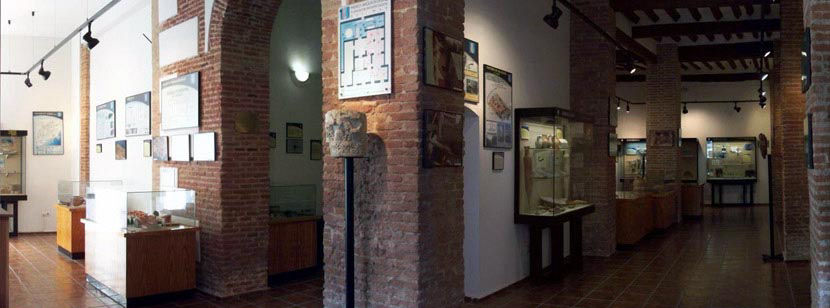
INTRODUCTION

The need to creatinge a Museum of Archaeology in Águilas dates from the 19th century, at a time when there was a boom ofin this type of institutions. Even in the second half of the 18th century, as a result of the constant construction building activity in this area, numerous archaeological findings took place. These discoveries were related to the ancient settlement that lies underground. Among the main findings are the ruins of Roman baths, found in 1787, in a plot located on Rey Carlos III Street.
The Archaeological Museum that you are visiting with the audioguide was inaugurated on November 20, 2000; therefore, it is a relatively new institution. It was created in order to achieve one main goal: integrating the conservation, protection, exhibition, research, and promotion of the local archaeological heritage, by encouraging the participation of the residents in the protecting on of their heritage, and also to offering visitors the opportunity to learn about the history of the city.
For this purpose, the building that was chosen was one located in the center of the city at 8, Conde de Aranda Street. This property is representative of the best civil architecture in Águilas, dating back to the late 19th century and early 20th century, and its unique façade is outstanding.
The layout of the interior that houses the permanent archaeological exhibition is a wide space with a ring-shaped circuit, which starts and ends at the same point.
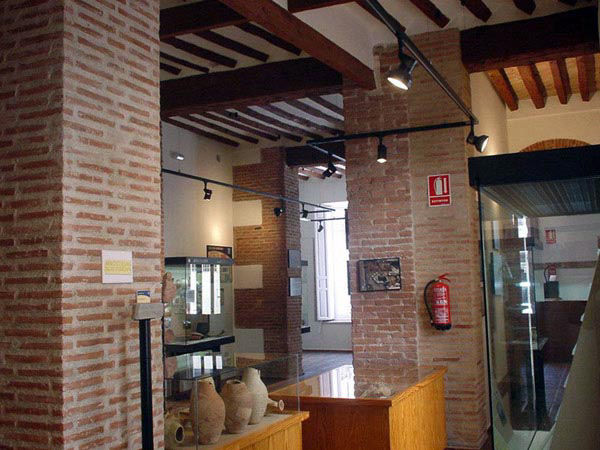
The collections you will discover with the audioguide are complemented by a number of some exhibition and audiovisual resources, in order to reach the pedagogic and didactic goals, goals which are not only educational in nature, but include a message of philosophical teaching, which are essential in the museological discourse.
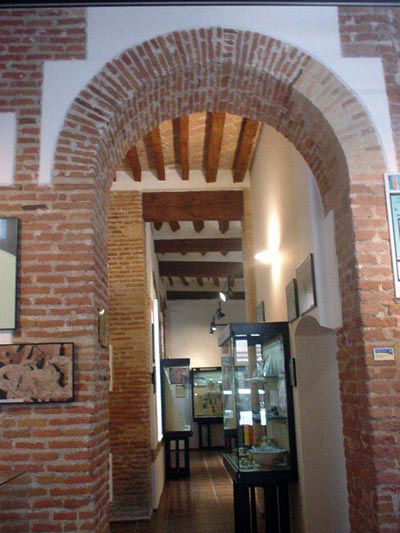
SHOWCASES 1 AND 2
The visit with the audioguide begins at the entrance on the left, where some of the showcases introduce us to the relevance of the the Science of Archology: archaeological science, which is aimed at recovering and interpreting the remains left by our ancestors. We can also see a graph containing all of the archaeological sites that have been found in the Municipality of Águilas.
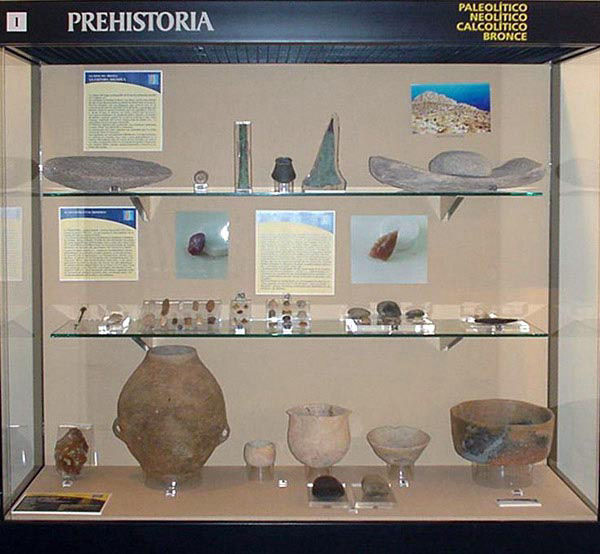
The permanent exhibition begins with prehistory. In showcase 1, objects of archaeological sites in the town and its surroundings are exhibited. They range from the Neolithic to the Bronze Age. The first known settlers date from the late Neolithic period, about 3000 BC. These people used cave C-6 of the Cape of Cope as a place for living, as well as for burials. The plans of this cave can be seen with the audioguide in the showcase on the right. An oval vase stands out at the lower section of the showcase. It‘s also worth taking a look at the objects of the chalcolithic-or “Copper Age” in the3rd millennium BC. This exhibition includes an outstanding collection of lithic pieces: arrowheads, scrapers, sickle teeth, knives, etc.
The first metallic objects are also here, such as the Palmela-type arrowhead, and a number of ceramic vases from Cope and Tébar. The showcase, at the top, also features pieces from the Bronze Age, such as ornaments from a tomb, consisting of a small ceramic vase (tulipa), a weapon (halberd) and a copper ingot. The ornaments come from the site of Fuente Álamo. On the right, in showcase 2, a few copies of argaric ceramic are showed.
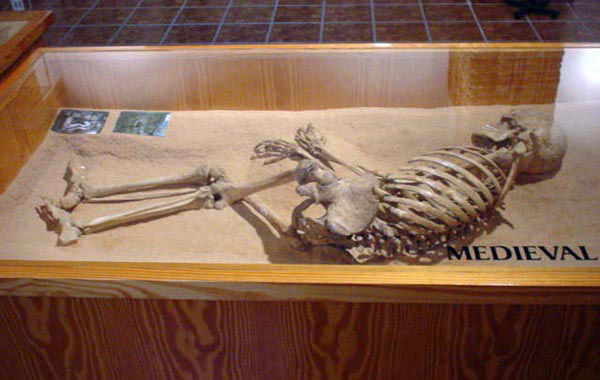
SHOWCASE 3
In the permanent exhibition of the Museum, the collection related to the Romanization stands out. Most of the pieces come from excavations that have been carried out in Águilas over the last few years, in the Roman settlement which lies bellow today’s city. Continuing the tour, on the right, you’ll see documents related to the two landmark buildings from this period. the Eastern and Western baths. The Eastern baths are located next to the Church of San José. The remains of these baths have been partially preserved and integrated into the new construction. Pictures can be seen at the top. The Western baths are located on Quintana Street. Their remains have been prepared for display as museum pieces, and you can visit them with the audioguide. Showcase No. 3 presents a model of this building, where, on the left, you can admire one of its Corinthian marble capitals.
SHOWCASE 4
The largest number of objects from this period is set in sections, forming an interesting monographic series. In front of the capital, next to the entrance door, we find showcase No. 4. Here, we have a collection of Roman materials used in construction: tégulas (flat tiles), ímbrices (curved roof tiles), and bricks of different types. In the center, there are bath nails (clavi coctiles), used to attach the vertical brick walls to the master wall in the heated environment of the thermal buildings, thus creating hot air chambers (concamerationes).
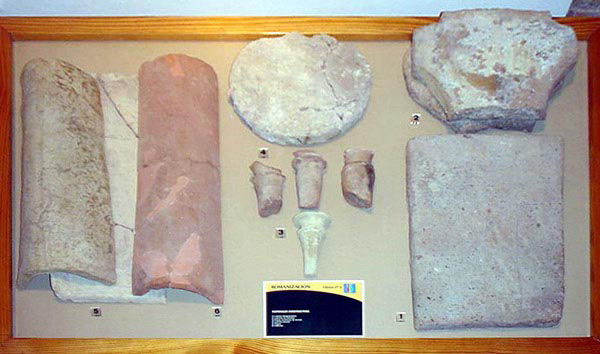
SHOWCASE 5
Moving to the left with the audioguide, in showcase No. 5, we have different types of common ceramics used as storage or in the pantry, ceramics for tables and kitchens; some of them are: pitchers, plates, cups, pots, etc.
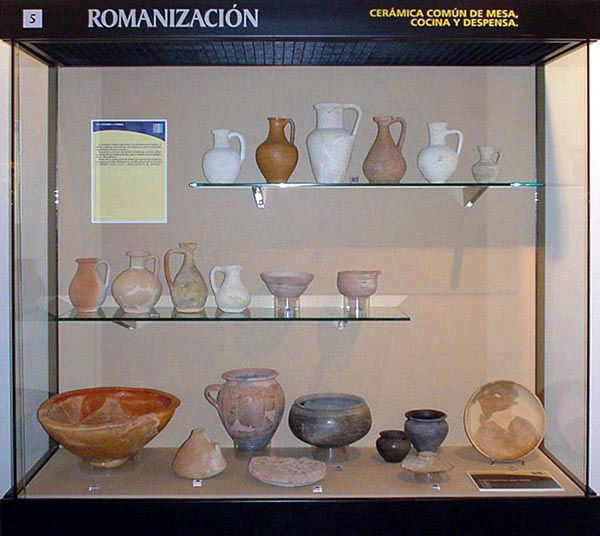
SHOWCASE 7
Continuing to the left with the audioguide, we stop at showcase No. 7, where we can see a selection of luxury ceramic objects. They are arranged chronologically. The technical and aesthetic value of these pieces is significant. It’s also important to emphasize the intense commercial activity in this historical period.
At the top, several pieces are exhibited: Iberian-Roman ceramics, Italian objects painted with black varnish (campanienses ceramics), and the first red-varnished objects (Italian terra sigillata). These red-varnished objects were so named because of the presence of the typical potter’s hallmark on the inner bottom. In the middle, we can see objects made of terra sigillata, of Gallic origin and, at the lower part, pieces of the prolific African terra sigillata with Orange varnish. These last pieces flooded the markets, especially during the decline of the Roman Empire.
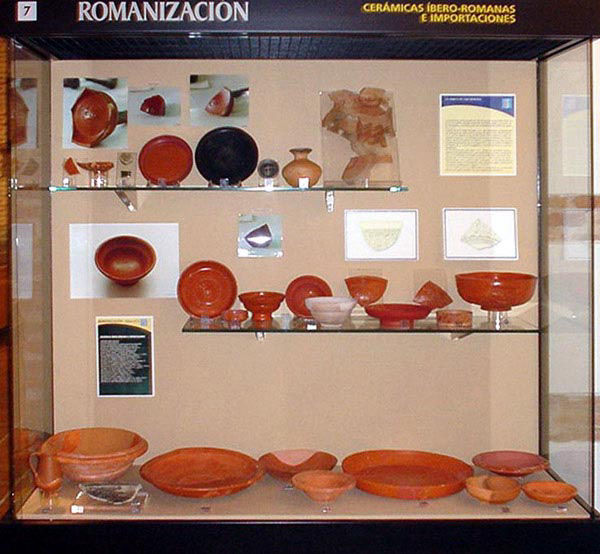
SHOWCASE 6
We continue walking with the audioguide until we reach showcase No. 6, on the right side. It is dedicated to housing, marked by two mill stones. Next to the house we can see showcases which tell us about excavations that have been made in Roman houses in Águilas. There are also suggested reconstructions. The showcase alsoexhibits all of the household items of a town house, domus in Latin, which was excavated on Quintana Street. Here we can see the dishes and utensils that were in this house at the time it was abandoned: kitchen ceramics such as pots, pans, lids and a mortar; tableware such as dishes and pitchers and even a chandelier which was used for lighting.
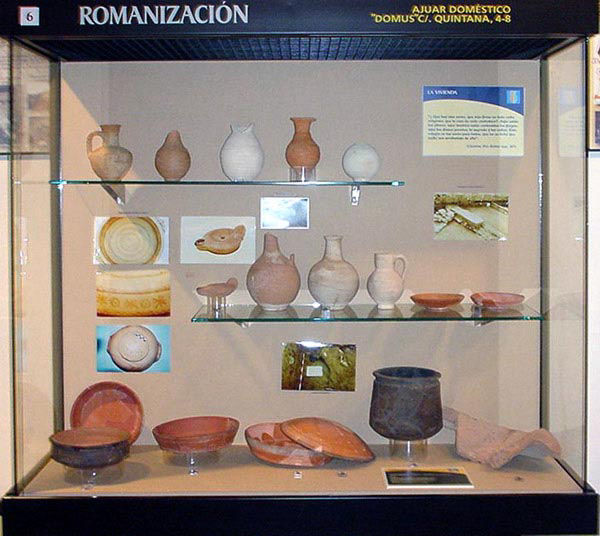
SHOWCASE 8
This showcase is set opposite showcase No. 6. Here we have a display of a monographic collection dedicated to fishing, and the production of salted fish. The fishing industry, together with the production of salted fish over the final centuries of the Roman occupation, was important enough to include this topic in the Museum. The diversity and abundance of objects are supplemented with textual information explaining the economic importance of fishing, processed products, documented factories in Águilas, and related industries. To the right of the showcase, we can see with the audioguide pictures of these factories. Two of them should be highlighted: the picture of Fraile Island, and that of the suggested reconstruction of the factory dug in El Paseo de la Constitución.
Among the objects shown, there are, on both sides of the showcase, two little amphoras for salted products. They were manufactured in the potteries of the Eastern baths (the spatheium type). There is an amphora, fragmented at the bottom, with the remains of salted products inside. In the middle section of the showcase, another collection is noteworthy, made up of hooks, needles for sewing nets, and a bronze shuttle, used to repair the fishing gears.
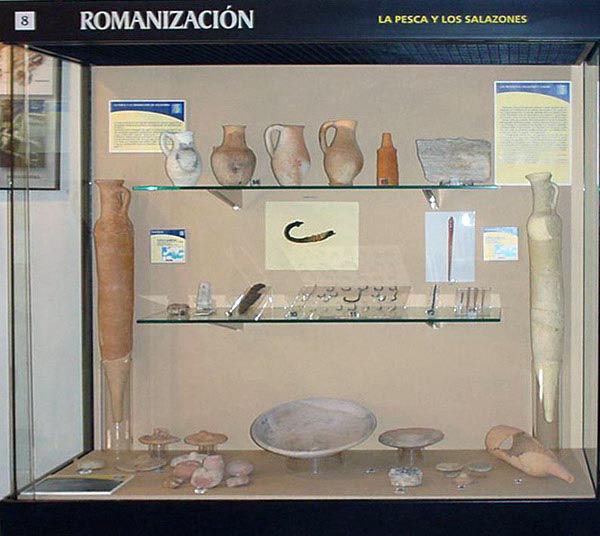
SHOWCASE 9
In the hall, next to showcase No. 6, we find with the audioguide showcase 9. At the top, a number of ceramic pieces recovered from another house (domus) are presented. The pieces, dating from the 3rd century A.D., were found during the excavation works in the house of Sagasta Street. Among them, a large canteen stands out. In the middle section of the showcase, you’ll find fragments of painted parietal decoration, together with several objects related to decorative arts: fragments of marble and stucco, such as capitals, cornices and an outstanding Gorgon head.
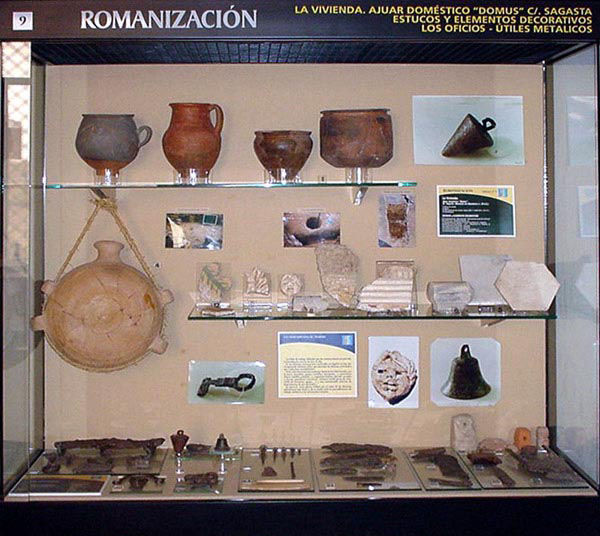
The showcase is marked on both sides by two panels with the original painted parietal decoration of the above-mentioned house on Sagasta Street. Finally, in the lower section of the showcase, an interesting collection is presented of everyday-use instruments related to different trades: keys, needles, large pruning shears, knives, sickles, weights for looms, a cowbell, etc.
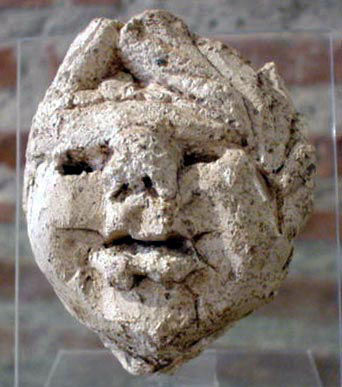
AMPHORAE
Continuing the tour with the audioguide, on the right, we find a space devoted to trade and amphorae (AM-for-eye) Here, we learn why these ceramic containers are significant in Roman Archaeology. On the top panels, there is an explanation of the manufacturing process and its functionality, stored products, shipping and shoring, commercial networks, etc. On exhibition is a selection of pieces chronologically arranged, which represents the entire Roman period. The origin of these pieces varies: Italy, Gaul, Betica (that is, southern Spain), North Africa, Portugual and, finally, Águilas itself.
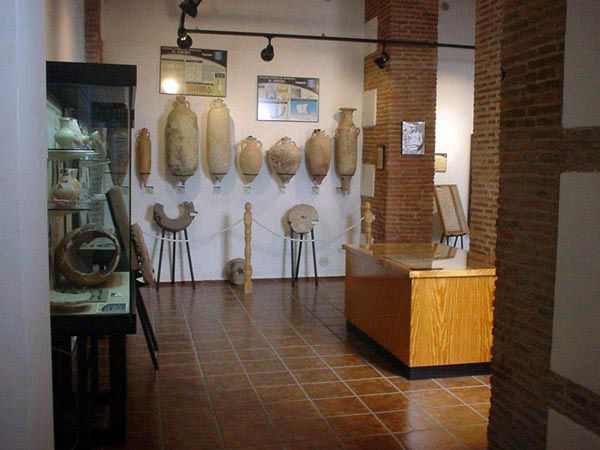
SHOWCASE 10
To the right of the amphorae,(AM-for-eye) several pieces are displayed which are related to social, religious, and everyday life. In the lower section of the showcase, in the middle, there is a selection of different types of chandeliers, chronologically ordered, including the whole era of the Roman occupation, ranging from the oldest Republic to the latest Roman period. These objects were produced, mostly, in North Africa. Glasses, as well as the remains of fabric (linen) and esparto grass are also exhibited. Finally, on the left, we find with the audioguide trinkets and personal ornaments made of metal and bone: bracelets, rings, tweezers, etc.
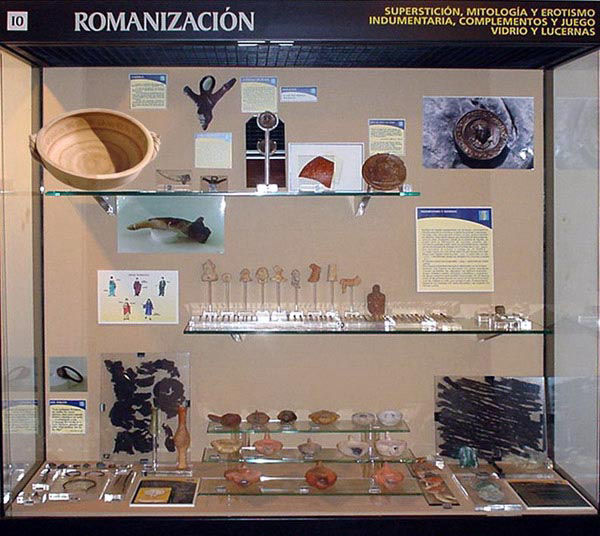
In the middle section, a collection of bone needles (acus crinalis) and terracottas is presented. To the right, several items are shown related to games, such as dice and chips and other objects for personal use, such as a comb made of bone.
In the upper section, several unique pieces are on display—some of the most significant in the museum. These are related to personal beliefs: superstition, sexuality, mythology and morality. Going from left to right, we find a number of interesting objects: the handle of a pocketknife –a phallic-shaped knife made of bone–; an amulet or bronze, a phallic pendant; a silver pendant (bulla) or capsella, with a representation of Isis on both sides; a piece of pottery decorated with an image of the breastfeeding of Romulus and Remus by the Capitoline Wolf (a representation of the founding of Rome), together with an erotic scene, and, finally, a ceramic disk with a representation in relief of the myth of Leda and the Swan. The audioguide continues in the next section.
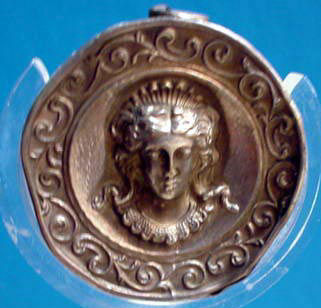
SHOWCASE 10 - A
To the left, for logistic reasons, we find showcase No.10-A. It is smaller and without lighting on its inside in order to protect the collection. In the lower section, a singular piece is displayed: a pot painted in traditional indigenous style, dating from the 2nd century A.D. Inside the pot, there is a decoration based on geometric patterns distributed horizontally. The outside ornamentation, on the other hand, is based on figurative representations: a stem, a leaf, and the letters FAVQ. The bottom of the pot is decorated with a representation of the male genitalia, where the glans is marked, and a line captures the moment of ejaculation. The combination of a phallic representation with other vegetal elements symbolizes the fertility of the earth. In the upper part of the showcase, recently donated pieces are on temporary display.
SHOWCASE 11
Continuing the tour with the audioguide, to the left, we find a section related to the funeral world in Roman times. To the right of showcase No. 11 is a panel re-creating a burial, which was carried out in the family vault, excavated in the late-Roman-period el Molino necropolis. Inside the showcase, various objects are presented that are part of different funeral ornaments, such as the remains of coffins, iron and bronze nails, and marble tombstones. At the base, a child burial in an amphora is shown, which belongs to the necropolis mentioned above. In the upper section, there is a peculiar piece: an African chandelier decorated with the menorah, the Jewish candelabrum with seven branches. This piece is unique in the peninsula, and has been a component of numerous temporary exhibitions throughout the country.
We also have several pieces that must have been used in initiation rituals. Three globular ceramic jugs stand out among these pieces. They have a handle. Their mouths were found sealed up with clay and ceramic fragments. According to their content, they must have been used in an initiation ritual related to the construction of the Eastern baths. One of them contained the bones of a bird, another, those of a fish, and the third contained vegetal remains; all three symbolize the three basic elements of life: earth, water, and air.
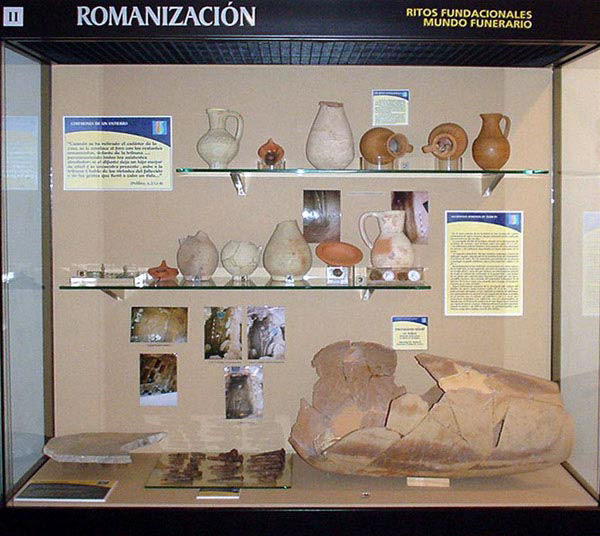
NECROPOLIS
To the left are the remains of a tomb cover, belonging to the El Molino necropolis. This piece is made of bricks bipedalis, above which lies a layer of lime mortar, where there are a number of prints that may have been left by the person who built the tomb.
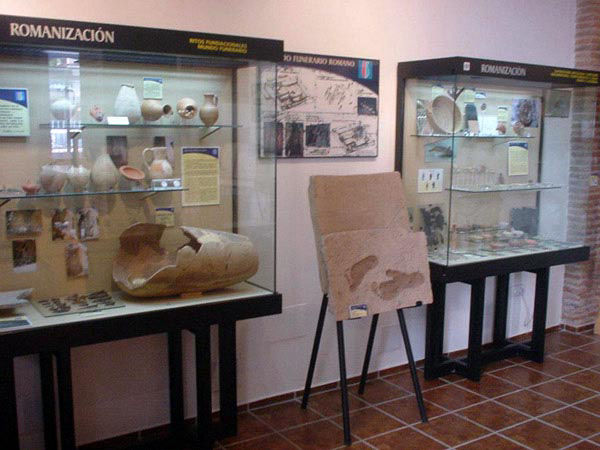
SHOWCASE 13
In showcase No. 13, the audioguide shows us a tomb that was discovered on Aire Street. The tomb dates from the 3rd century A.D., and was built on a grave with a base, and covered with bricks. A funerary inscription is displayed behind the showcase.
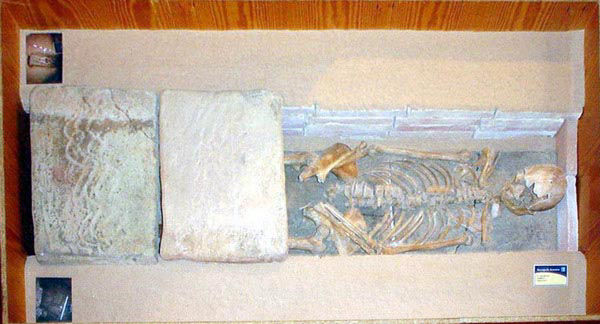
SHOWCASE 14
Following the corridor towards the exit with the audioguide, on the left, in showcase No. 14, several pieces are on display that come from the late-Roman-period: potteries from the 5th century A.D). These potteries were excavated at the Eastern baths, next to the Church of San José, once the thermal building was not used anymore. As part of this selection of ceramic material, six different types of amphoras are displayed; There are also large storage jugs, as well as tableware (plates, mugs, bowls, etc.).
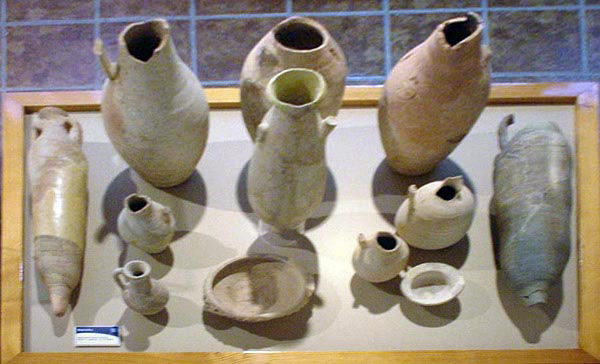
SHOWCASE 12
Opposite this showcase is the coin showcase (No. 12). In this numismatic section, coins from Roman times are predominant. There is a collection ranging from the early Hispano-Roman coinage to the late-Roman-period issues of small size. The set is completed with medieval and modern coinage, including significant silver coins from the Almohad period. Before leaving, if you look out the window you can see el Molino.
SHOWCASE 15
The medieval collection from the Islamic period we can see with the audioguide is small. It is mainly represented by objects from excavations on the hill of the Castle of San Juan. On the left, next to showcase No.14 that contains late-Roman-period objects, a burial from that time has been recreated. It belongs to maqbara, the cemetery located in the vicinity of San Juan Street and Abastos Square.
SHOWCASE 16
Continuing down the hall with the audioguide, to the right, we will find a variety of objects related to the hisn, and a small settlement from the Hispano-Arab period (11th to the 13th century). Among these objects we find glazed ataifores (ancient dishes), flasks, oil lamps decorated in manganese, a pipe, metal and ivory items, etc.
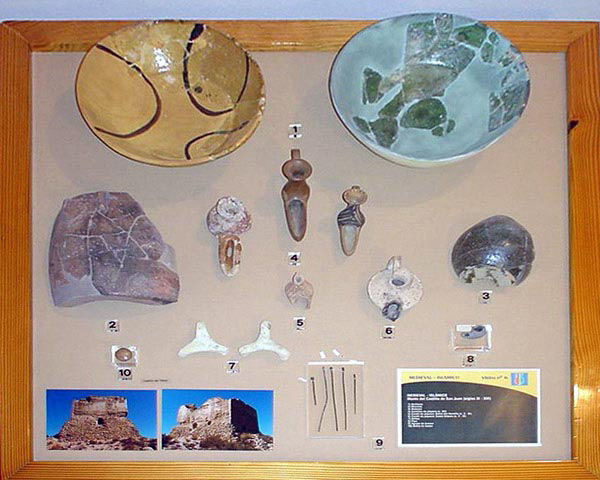
SHOWCASE 17
The audio-guided tour to the archaeological section of the Museum ends in the area dedicated to the modern era, whose centerpiece is the Castle of San Juan de las Águilas. The castle is of paramount importance to the city, because the new population of Águilas emerged under the protection of this castle, in the second half of the 18th century.
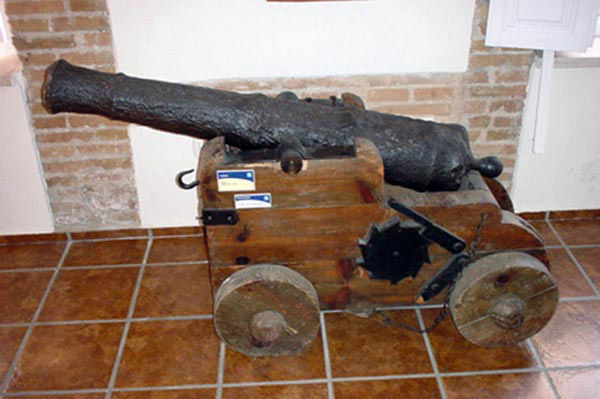
Opposite the showcase devoted to the Middle Ages, we find showcase No. 17, containing objects from the 18th to the 20th century. These were retrieved from the hill of the Castle and the current town center. We can take note of the collection of pipes and garment accessories belonging to various guards from the castle.
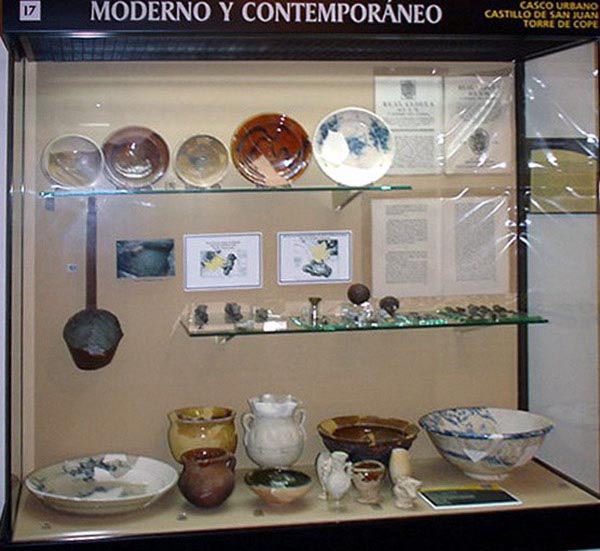
MONETARY ROOM
After the visit to the archaeological exhibition, we head for the back of the room. On the left, we go into another room dedicated to the exhibition of coins and paper money from around the world. The exhibition is organized into continents. Most of the collection has been donated by Doctor Miguel Pérez Redondo. To the left of this room are two more rooms: one for audiovisuals and another for temporary exhibitions.
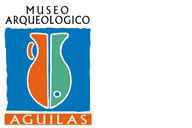



Museum of Archaeology: Calle Conde de Aranda, 8, 30880 Aguilas, Murcia
- Tel.: +34 96 849 32 87
Back to Index